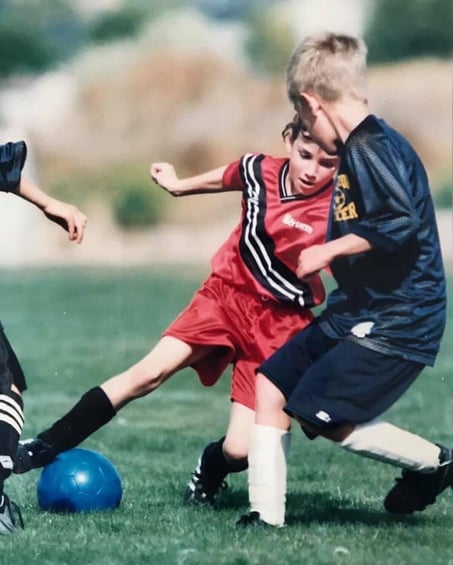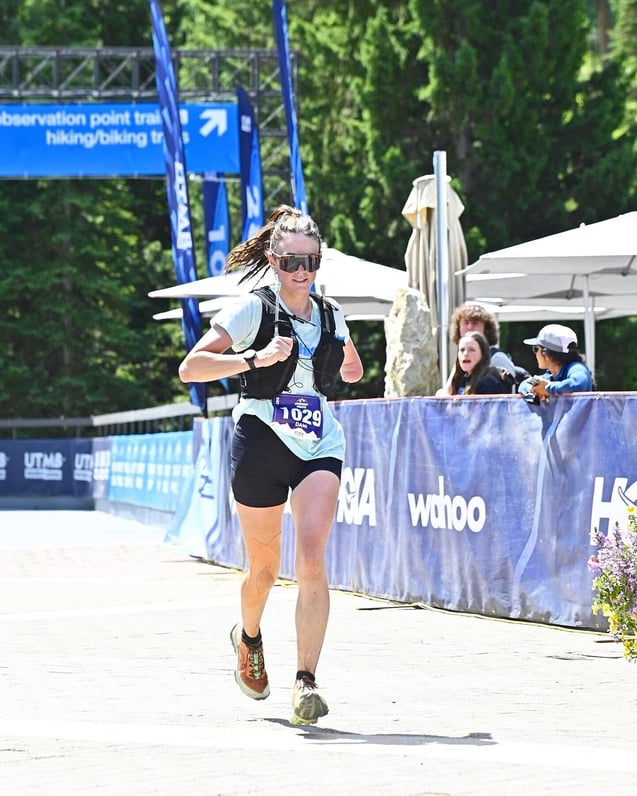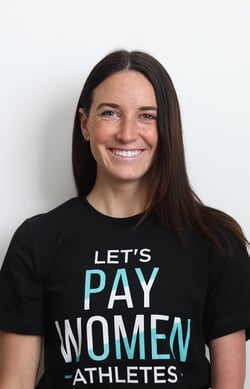
I’m tired…. I’m so tired of trying to convince brands, race directors, even the average sports fans, that athletes with disabilities are worth the investment. How many times do I need to repeat the fact that 15% of the world’s population has a disability? How can I convince you, sitting at home watching the Paralympics, that we matter?
It’s exhausting and I am tired. I should not need to tell people to create a space for people with disabilities, yet day in and day out I am.
You all should be caring about this marginalized community, because the harsh truth is ANYONE at ANY time could become disabled. It is likely that in this lifetime, you are going to know someone who goes through an injury that could leave them disabled. That is why now is the time to step up as an ally to this community.
My name is Dani Aravich, and I am a 2x US Paralympian. I never associated myself with the word “disability” until I started training for the Paralympics in 2019. For some background, I was born missing my left hand and forearm. It is all I have ever known, and I used to despise the fact that I had one less hand than the average person. Now, some could say it is my superpower, and you bet I will probably type faster than you on a computer and run faster than you in a race.
superpower, and you bet I will probably type faster than you on a computer and run faster than you in a race.
Sorry, not sorry.
When I got involved in the Paralympic movement, I had to come to terms with the fact that I had a disability. To be honest, I felt phony using that word, seeing teammates in the Paralympics with much more severe impairments than mine. Disability is defined as a physical or mental condition that limits a person’s movements, senses, or activities. But that is what is so unique about this community of people with physical disabilities: we all have different impairments and we have found different ways to make life and the world (which was not designed for people with disabilities in mind) work for us. There is no standard mold in this community.
My teammate has a tattoo that says “create your own normal,” and that is what it is all about for us. My normal of having one hand looks a lot different than my teammates who use a wheelchair or have a visual impairment. Even though I may not look “the most disabled," I took it upon myself to make this my mission: to find ways to include disability in more conversations, whether at the workplace, in sport, and most importantly in society.
How am I doing this? I am connecting with companies and chatting about disability as a part of DEI. Which always begs the question: why is disability the one category that always seems to be left out of those conversations on diversity?! Maybe we should rename it DEIA, diversity, equity, inclusion, and ACCESSIBILITY. I am continuing my education at the University of Michigan in disability policy, to better comprehend the ADA and other laws related to disability.
I am using my platform with Team USA to have even more conversations about adaptive sports. While Team USA is doing a fantastic job at including and highlighting the Paralympics more than ever, many brands need to step up their investment in signing Paralympic athletes. Signing athletes with disabilities to work with your brand is GOOD for business. Not only are you investing in the community, you are highlighting a marginalized community and showcasing to your customers that you care about DEI and A.
An area that I am personally passionate about is getting the outdoor industry to be more inclusive to people with disabilities. When I started trail running last summer, every time I showed up to a start line, all I saw was white, non-disabled men. I thought man, there must be people from our community who would want to be out here — maybe they just don’t know it exists. The other week I was at a race in Salt Lake City, Utah and I saw a leg amputee walk up to the start line. I was like, “Hell yeah! I am not here alone.” But out of hundreds of runners, why are there only two with disabilities?

Barriers to entry are the biggest battles when we look at non-Paralympic sports (i.e. sports that are not included in the Paralympic Games, yet). It is just not enough to hold an ‘adaptive category;’ are you ensuring that there are accessible restrooms? What about accessible parking? What about podiums and prize money?
We need to create a space where these athletes feel included and that they belong there.
As a 2x US Paralympian and a passionate advocate for the inclusion of athletes with disabilities, I find myself exhausted from continually trying to convince brands, race directors, and sports fans about the worth of investing in this community — but it’s a worthy fight. It can be disheartening to repeat statistics, but I have taken it upon myself to champion the inclusion of disability in all sports conversations. So, to all brands, race directors, and sports enthusiasts out there, I urge you to recognize the potential of athletes with disabilities and the power of inclusivity. Embrace the uniqueness and diversity within this community, and let us all work together to create a world where disability is not a limitation but a celebration of human resilience and determination. Let us build a future where sports and society are accessible and welcoming to all, regardless of their abilities, and where everyone has the opportunity to thrive and excel.
About Parity
Minority-founded in 2020, Parity's mission is to close the gender income and opportunity gap in professional sports. By developing high-impact collaborations between brands, professional women athletes and their fans, Parity has proudly put more than $2 million in the pockets of women athletes, attracting dozens of brands to the movement in the process. The platform offers connections to more than 850 women athletes from 70+ sports, including well over 200 Olympians and Paralympians. For more information on how to tap into the rapidly rising influence and popularity of women athletes, visit https://paritynow.co or follow us on Instagram, LinkedIn, Facebook, X (formerly Twitter) and Threads.




-1.png?width=600&name=What%20womens%20sports%20marketing%20campaign%20should%20you%20run%20in%202026%20(1)-1.png)